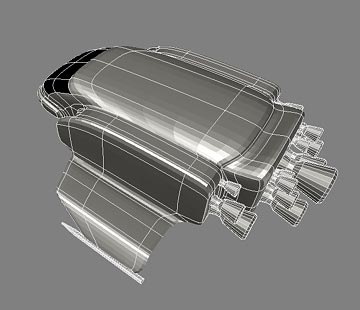[/caption] Currently, launching 1 pound (.5 kilogram) of payload to space costs about $5,000 USD, so every little bit helps if engineers can cut down on the weight of the spacecraft. Scientists from the University of Michigan have patented their ideas for cutting down the size and weight of the thrusters used in space to maneuver and control the spacecraft. Usually these thrusters are fairly big; they can be as big as a refrigerator. But the new thrusters, called nano-thrusters, could be made into flat, low weight sheets and mounted on the sides of spacecraft. The new type of thrusters would save weight and fuel, while having a longer life as well.
Conventional ion thrusters work by accelerating gas ions to generate force in the opposite direction. But, they waste gas and are limited in lifetime because the accelerated ions damage the engine.
But, according to a report in
New Scientist
, the new nano-thrusters, developed by Brian Gilchrist and colleagues at the University of Michigan in Ann Arbor, US, avoid these problems.
Each consists of a small chamber of fluid with electrodes inside and a vent at the top. Above that vent more electrodes generate a powerful electric field. The fluid contains nanoparticles just tens of nanometres across that are ionized by electrodes in the chamber. Those charged ions are accelerated by the electric field and ejected from the vent, producing thrust.
These nanothrusters can be used in large numbers on flat panels. To control the spacecraft efficiently, they would probably have to cover large areas of spacecraft. But in the drag-free space environment, it be just like having a second skin on the spacecraft. And they would be much more light-weight than conventional thrusters, and would help cut the costs of launching vehicles to space.
Read the U of M's
patent here
.
Source:
New Scientist
 Universe Today
Universe Today
